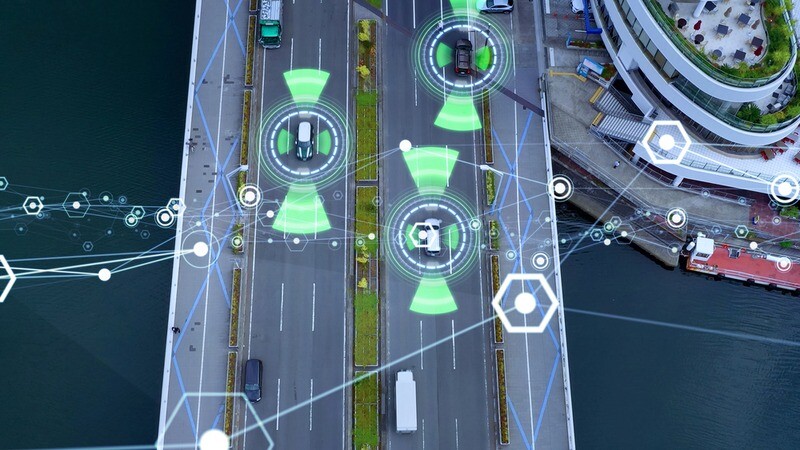Earlier this month, smart lidar sensor provider RoboSense announced their new connection to the NVIDIA Omniverse ecosystem. In their release of the news, the Shenzhen, China-based company indicated that they will be “using the development platform based on Universal Scene Description (USD) to accelerate the development, testing, and validation of its sensor technology.”
With this new connection for RoboSense, their second-generation smart solid-state lidar model will be integrated into NVIDIA DRIVE Sim to enable “physically based, high-fidelity sensor simulation.” Now, those developing autonomous vehicles will have access to RoboSense’s lidar within the simulation platform for development and testing purposes. Furthermore, RoboSense will be able to use the platform in order to test their own lidar systems. Below is an example of what that looks like within the Omniverse platform.
RoboSense manufactures and distributes multiple kinds of lidars, including mechanical, but the focus of this integration is with the company’s automotive-grade lidar systems. Per this most recent release, their M-Series lidar is the world’s first second-generation smart solid-start lidar to achieve mass production for automotive applications, while also being the lidar with the most designated partnerships worldwide, with integrations into vehicle models already in place. RoboSense’s M-Series features two-dimensional MEMS scanning architecture, with GAZE functionality that can switch scanning modes and change patterns based on scenario to help improve performance in complex environments.
Now, developers of autonomous vehicles will be able to utilize this technology in realistic simulations using NVIDIA’s DRIVE Sim platform. Using the core simulation and rendering engines from the broader Omniverse platform, DRIVE Sim provides a dynamic simulation environment allow for testing in a variety of scenarios with their Neural Reconstruction Engine (NRE). In their words, “The NRE is a set of AI tools that brings real-world data directly into simulation to dramatically increase realism and speed up production. NRE turns video data collected during a drive into interactive 3D test environments where developers can modify scenarios, add synthetic objects, and apply randomizations to make the initial scene even more challenging.”
This is just the latest addition to the Omniverse platform, which continues to push simulation capabilities for a number of different industries. This particular product, now adding in one of the leading automotive-grade lidar providers to add even more value, is particularly intriguing considering where we are in the autonomous vehicle space. Still probably farther from mass adoption than some would have expected a decade or so ago, we are starting to get to the point where manufacturers are ready to start testing their vehicles.
That said, there is justifiable push back from the general public about this testing to be done on public roads. At some point, of course, they need to be tested on real roads if they are to be truly viable, but being able to further refine the technology – both from the perspective of OEMs as well as RoboSense to improve their lidar systems – in a hyper-realistic digital realm will only make that eventual trip to physical roads.
On this news, Mark Qiu, co-founder and executive president of RoboSense, said in a press statement, “The global automotive industry is undergoing a massive transformation, with ADAS and LiDAR markets continuing to gain traction. Leveraging the NVIDIA Omniverse ecosystem, RoboSense LiDAR technology and industry experience can be applied in a wider field, providing strong support for the development and verification of autonomous vehicles. RoboSense will work with NVIDIA to fully leverage the advantages of LiDAR technology, continuously improve the perception capabilities of autonomous vehicles, and achieve more efficient, safer, and smarter autonomous driving applications. We are committed to promoting the development of the global automotive and autonomous driving industries.”






